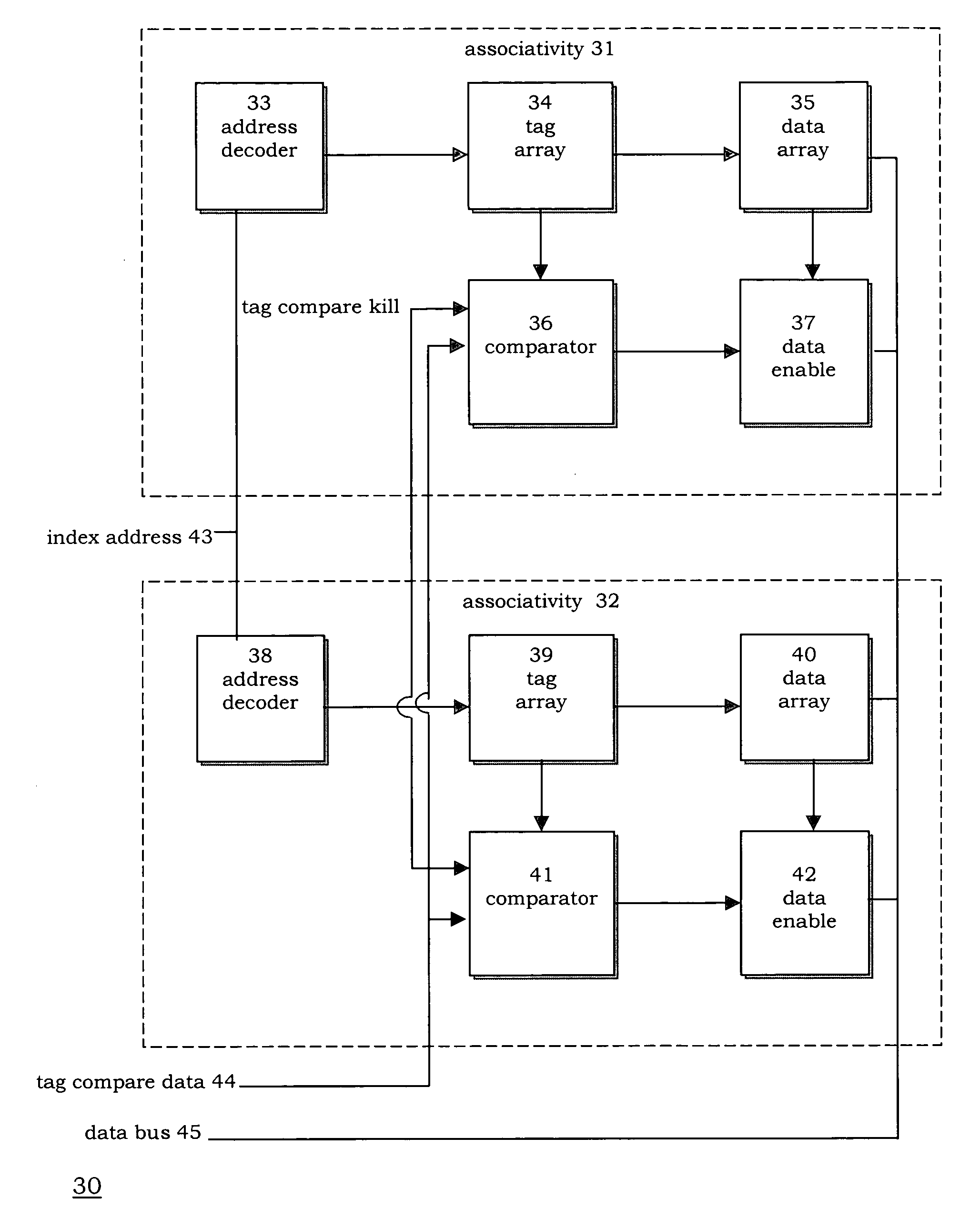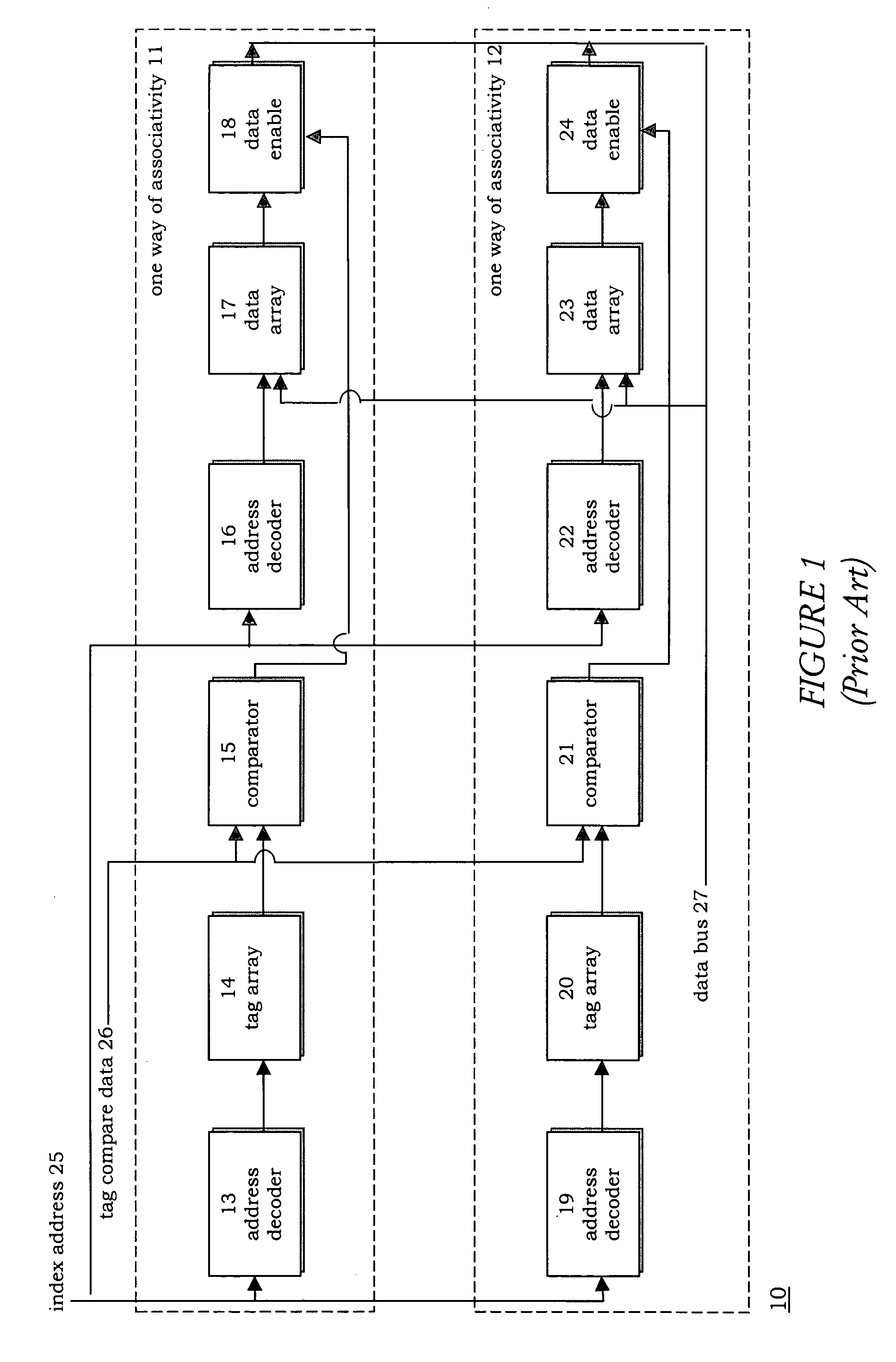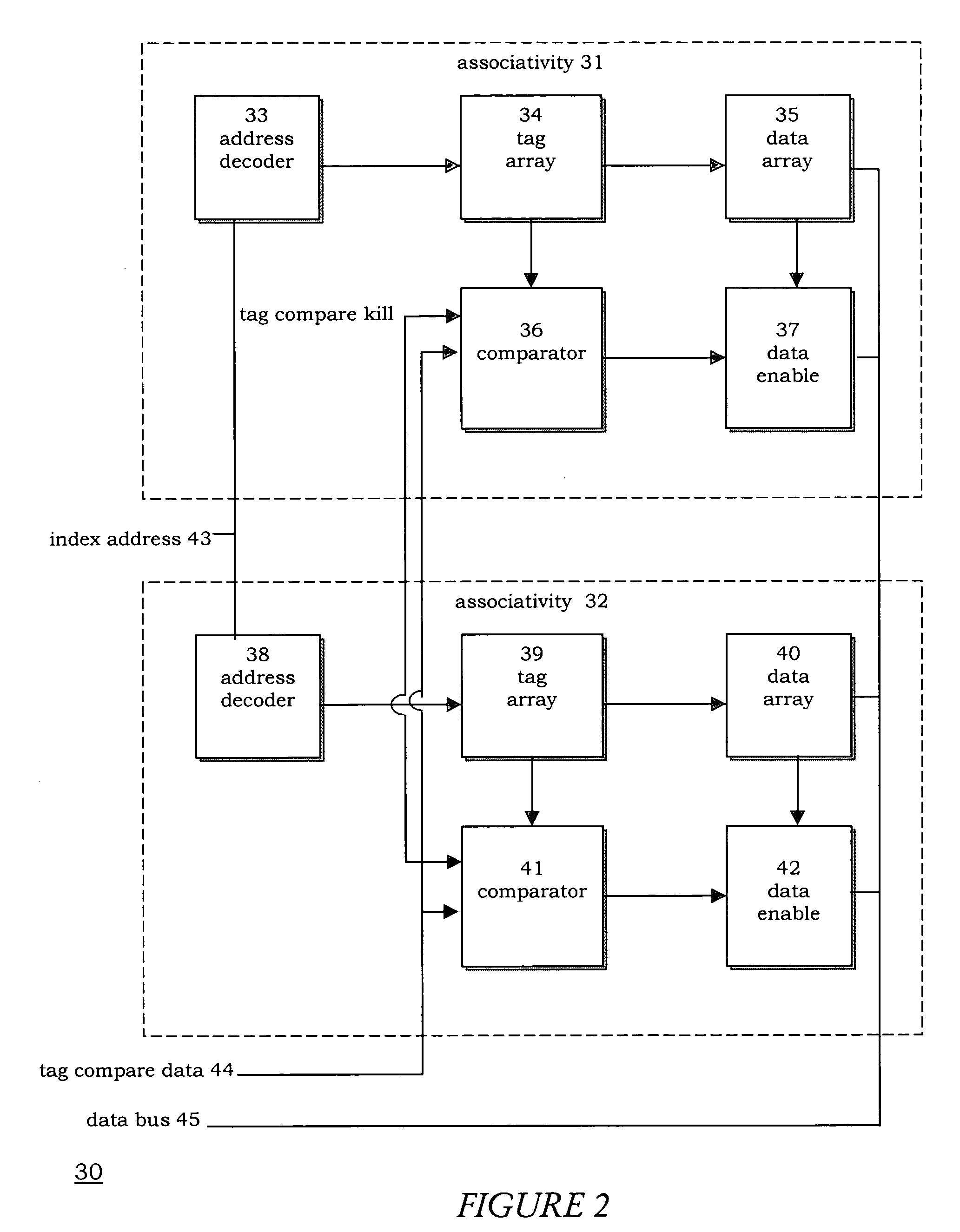Low-power cache system and method
a cache system and low-power technology, applied in the field of memory system design, can solve the problems of affecting the performance of the cache architecture, and consuming a large amount of system power, so as to reduce power dissipation, increase modularity, and provide scalable associativity.
- Summary
- Abstract
- Description
- Claims
- Application Information
AI Technical Summary
Benefits of technology
Problems solved by technology
Method used
Image
Examples
Embodiment Construction
[0015]FIG. 2 is a block diagram illustrating a cache pipelined architecture 30, with an associativity 31, and an associativity 32. An address decoder 33 is shared by a tag array 34 and data array 35 in associativity 31. Similarly, a common address decoder 38 is used in associativity 32 for decoding with a tag array 39, and a data array 40.
[0016]Address decoder 33 serves to decode the incoming index address 43 in associativity 31. Initially, tag array 34 is powered-up without supplying power to data array 35. A comparator 36 compares the tag from tag array 34 with a tag compare data 44. Comparator 36 generates an output signal that enables or disables a data enable 37 for powering up or not powering up data array 35. When data array 35 is powered-up, and there is a tag hit, data enable 37 enables output to place data on a data bus 45.
[0017]Similar type of flow is generated through associativity 32. Address decoder 38 decodes the incoming index address 43. Initially, tag array 39 is p...
PUM
 Login to View More
Login to View More Abstract
Description
Claims
Application Information
 Login to View More
Login to View More - R&D
- Intellectual Property
- Life Sciences
- Materials
- Tech Scout
- Unparalleled Data Quality
- Higher Quality Content
- 60% Fewer Hallucinations
Browse by: Latest US Patents, China's latest patents, Technical Efficacy Thesaurus, Application Domain, Technology Topic, Popular Technical Reports.
© 2025 PatSnap. All rights reserved.Legal|Privacy policy|Modern Slavery Act Transparency Statement|Sitemap|About US| Contact US: help@patsnap.com



